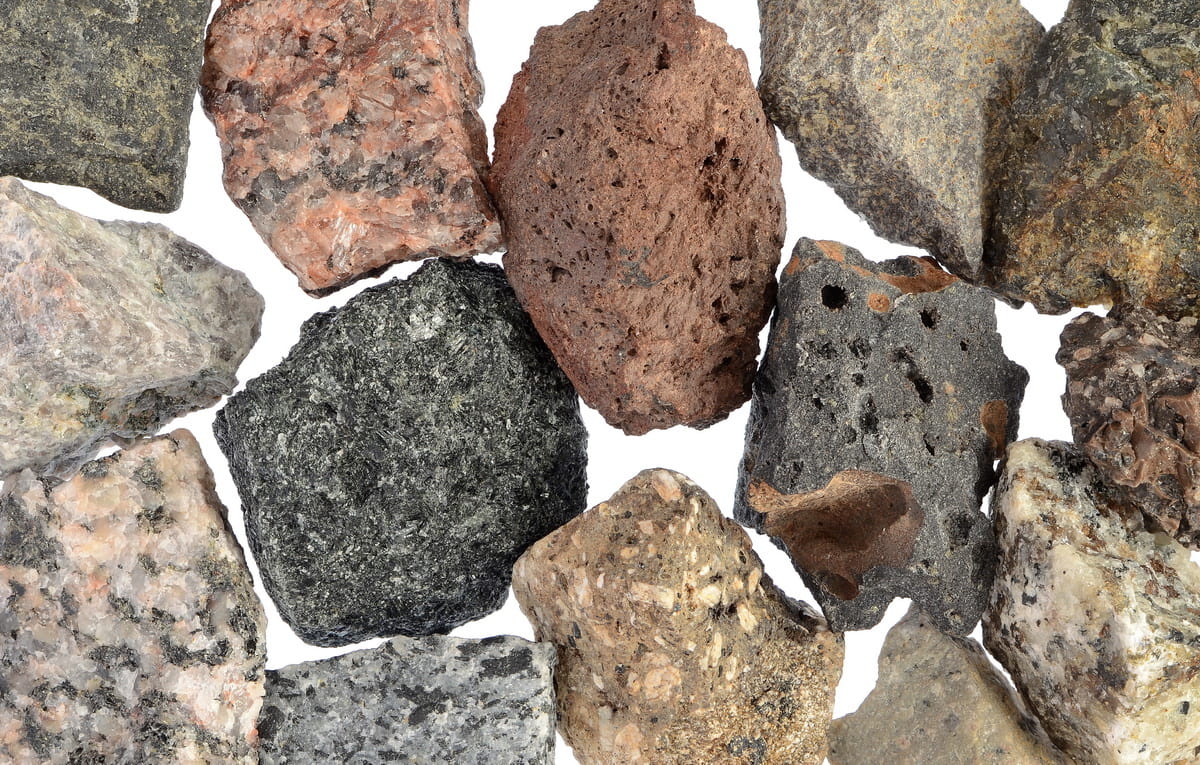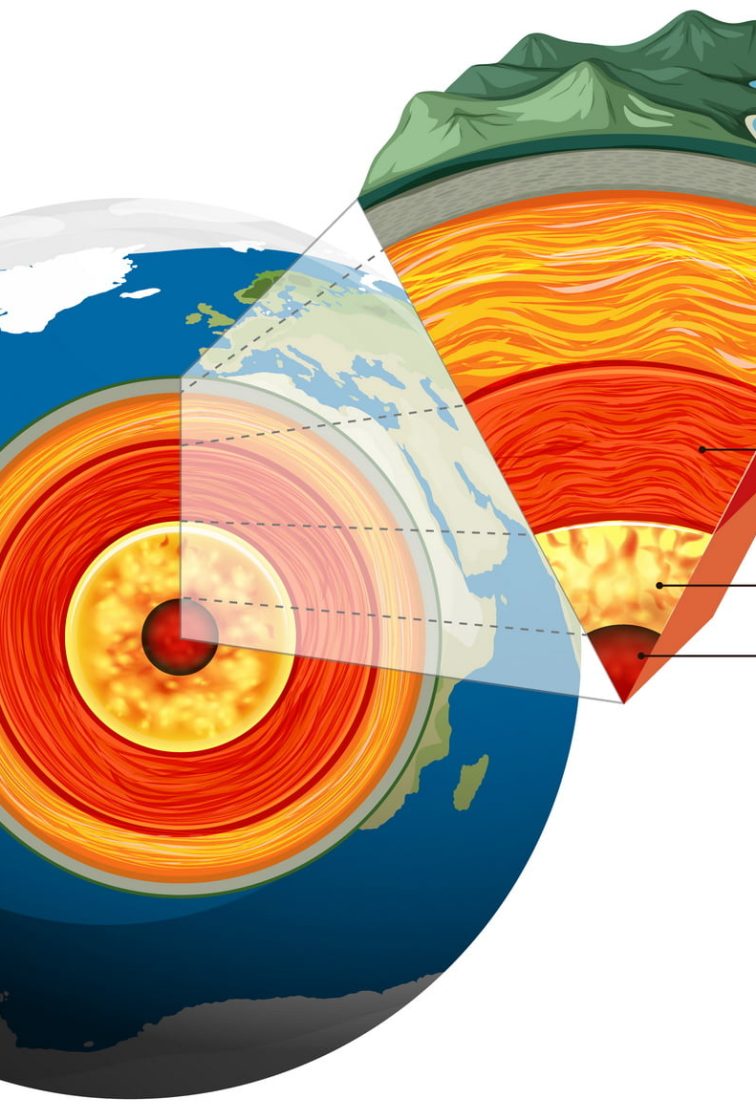Igneous rocks, the most abundant rock type on Earth’s surface, are nature’s historical recorders. Formed from the cooling and solidification of magma or lava, these rocks are living snapshots of our planet’s fiery inner workings.
With over 700 known types, their formation dates back to the Hadean Eon, over 4 billion years ago. These rocks are not just a geologist’s delight; they’ve been instrumental in shaping human civilization, from the Stone Age tools to contemporary architecture.
Exploring these fascinating stones reveals fun facts about igneous rocks, shedding light on their pivotal role from ancient tool-making to modern architectural marvels.
1. The Fiery Birth of Igneous Rocks: Origins in Magma and Lava
Igneous rocks are categorized based on their formation: intrusive, formed within Earth’s crust from magma, and extrusive, formed on the surface from lava.
This distinction is key to understanding Earth’s geology. For instance, granite, an intrusive rock, forms large, visible crystals due to slow cooling deep within the Earth, dating back to Precambrian times. In contrast, basalt, an extrusive rock, cools rapidly at the surface, resulting in a fine-grained texture, and is commonly found in oceanic crusts and volcanic islands.
2. Diverse and Beautiful: The Many Colors of Igneous Rocks
The color spectrum of igneous rocks is directly linked to their mineral composition. Basalt, rich in iron and magnesium, exhibits a dark hue, while granite’s lighter color comes from quartz and feldspar. Specific minerals like hornblende and biotite contribute darker shades to rocks.
This mineralogical diversity isn’t just aesthetically pleasing; it serves as a geological fingerprint, aiding in identifying the conditions under which the rock formed. For example, the pink hue in some granites is due to the presence of potassium feldspar, indicating a higher silica content.
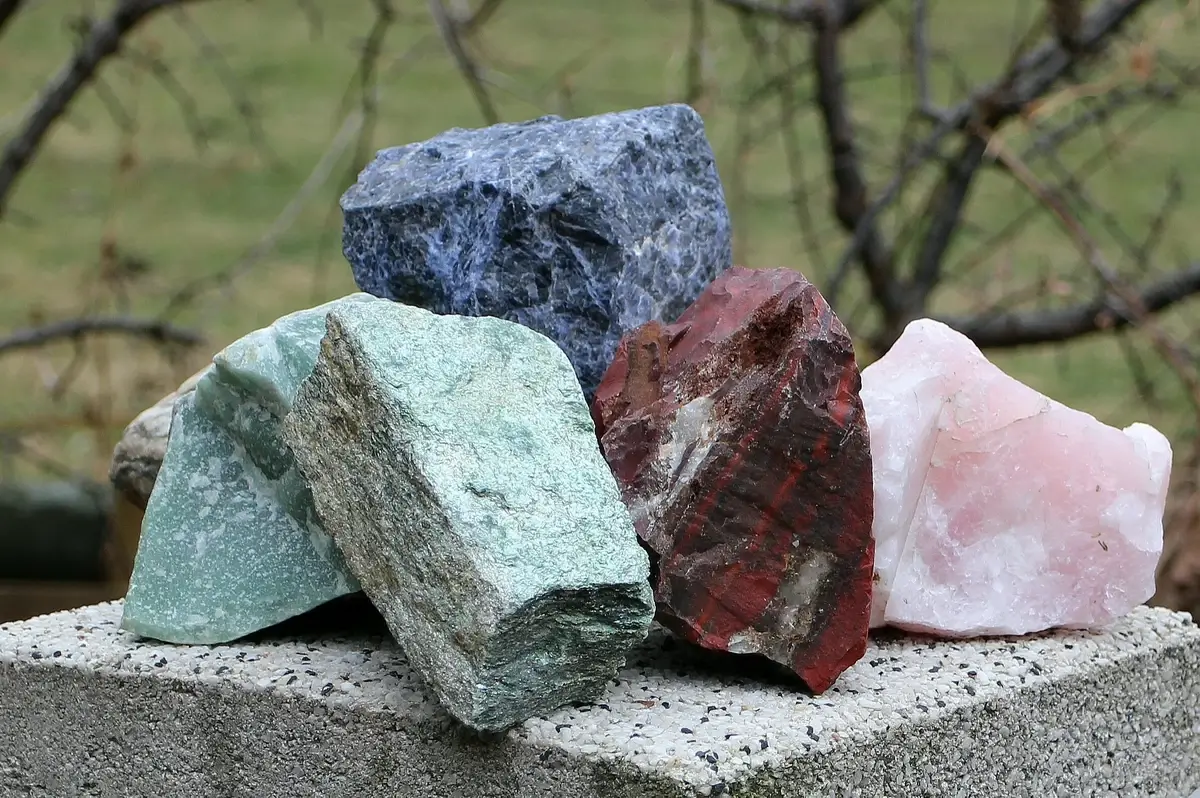
Image: pxhere.com
3. From Deep Earth to Moon: The Ubiquity of Igneous Rocks
Igneous rocks are not exclusive to Earth; they are also a significant component of the lunar surface. Apollo missions, particularly Apollo 11 in 1969, brought back lunar basalt samples, revealing similarities with Earth’s igneous rocks.
This discovery has profound implications for our understanding of the moon’s formation and its volcanic history, suggesting a shared geological heritage with Earth. The lunar highlands, composed primarily of anorthosite, an igneous rock, provide insights into the early differentiation of the moon’s crust.
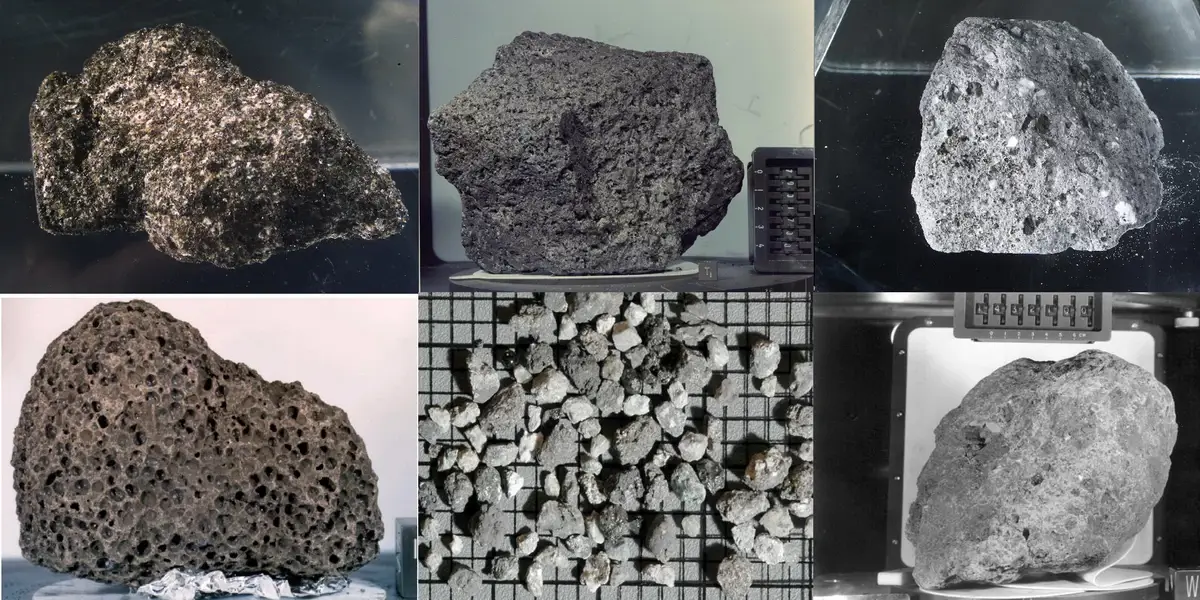
Apollo mission’s lunar rock samples. Image: mavink.com
4. Igneous Rocks in Human History: Ancient Tools and Structures
Human reliance on igneous rocks dates back to the Paleolithic era, with obsidian being a prime material for tools due to its sharp edges and ease of flaking. This volcanic glass has been found in archaeological sites dating back to around 700,000 years ago.
Similarly, durable igneous rocks like granite and basalt have been the cornerstone of ancient architecture. The Red Pyramid in Egypt, constructed around 2590 BCE, showcases the enduring nature of these materials, highlighting their significance in early engineering and construction techniques.
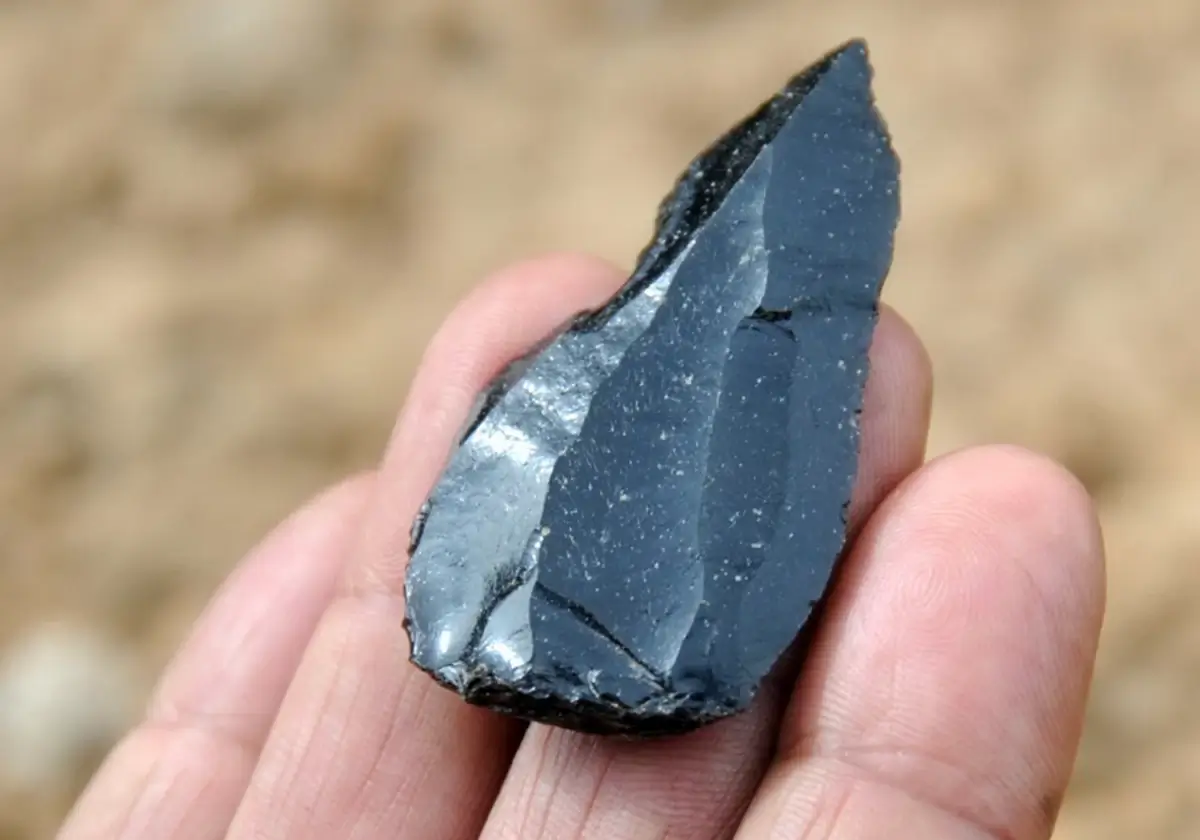
Obsidian tool from the Paleolithic era. Image: nationalgeographic.com
5. The Granite Phenomenon: A Deep Dive into Its Formation
Granite, a hallmark of continental crust, forms through the slow cooling of magma deep within Earth’s crust. This process, often taking millions of years, allows large crystals of quartz, feldspar, and mica to form, giving granite its granular appearance. Interestingly, the composition of granite varies based on its formation location, with some granites dating back to the Archean Eon, around 2.5 billion years ago.
Its durability and aesthetic appeal have made it a popular choice for buildings and monuments throughout history.

Melozitna granite rock. Image: usgs.gov
6. Volcanic Glass: The Fascinating Creation of Obsidian
Obsidian, formed from the rapid cooling of felsic lava, is nature’s glass, lacking a crystalline structure due to its quick solidification. This process, often occurring at the edges of felsic lava flows, results in a glassy and smooth texture.
Obsidian’s unique properties, including its sharp edges and conchoidal fracture patterns, have been utilized by various cultures for cutting tools and ornamental objects. Radiocarbon dating of obsidian artifacts has provided insights into ancient trade routes and cultural practices.
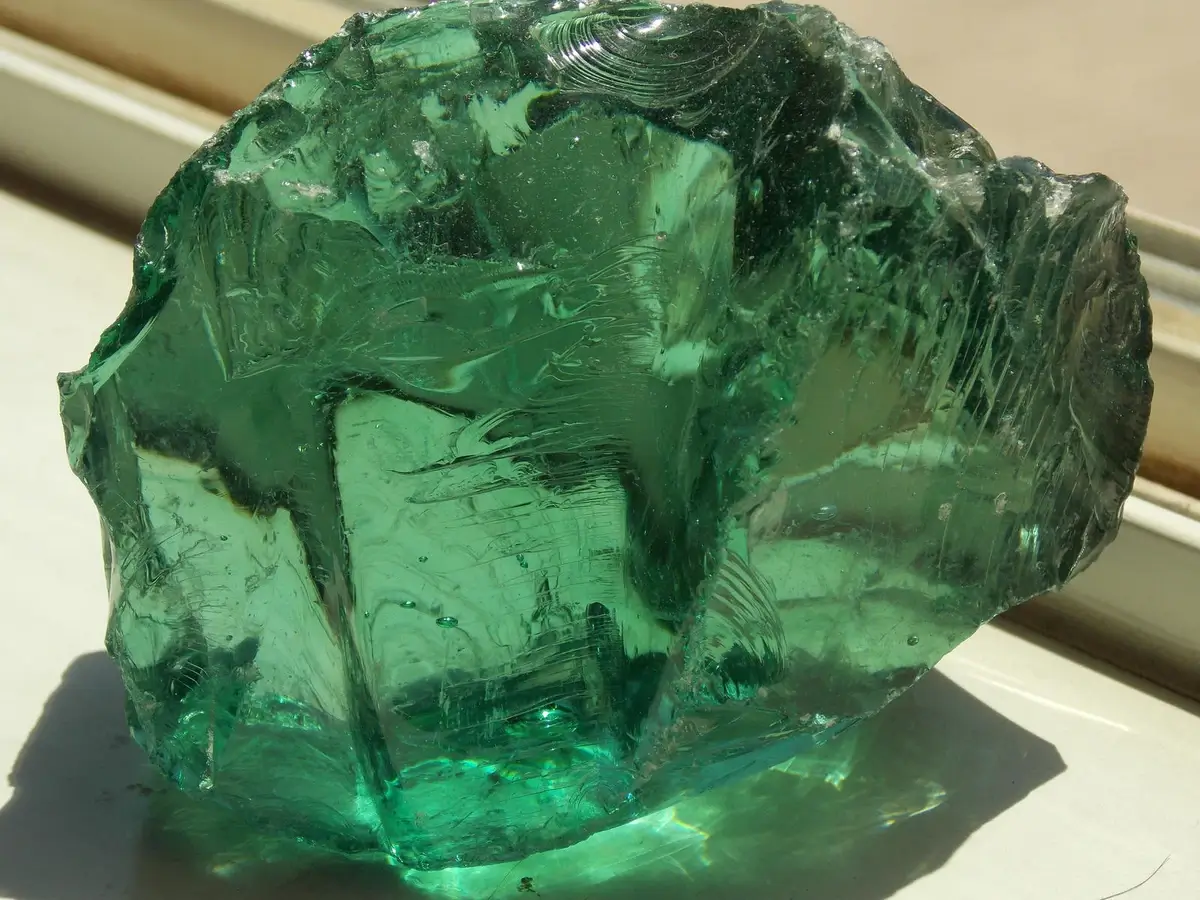
Green volcanic glass. Image: mavink.com
7. Basalt Columns: Nature’s Geometric Marvels
Basalt columns are a stunning natural phenomenon resulting from the cooling and contraction of basaltic lava flows. These columns, often forming hexagonal patterns, are created as the lava cools and contracts uniformly, leading to the cracking of the rock into these unique shapes.
Famous examples include the Giant’s Causeway in Northern Ireland and the Devil’s Postpile in California, USA. These formations, some dating back to about 60 million years ago, provide not only a visual spectacle but also insights into the cooling rates and thermal dynamics of lava.
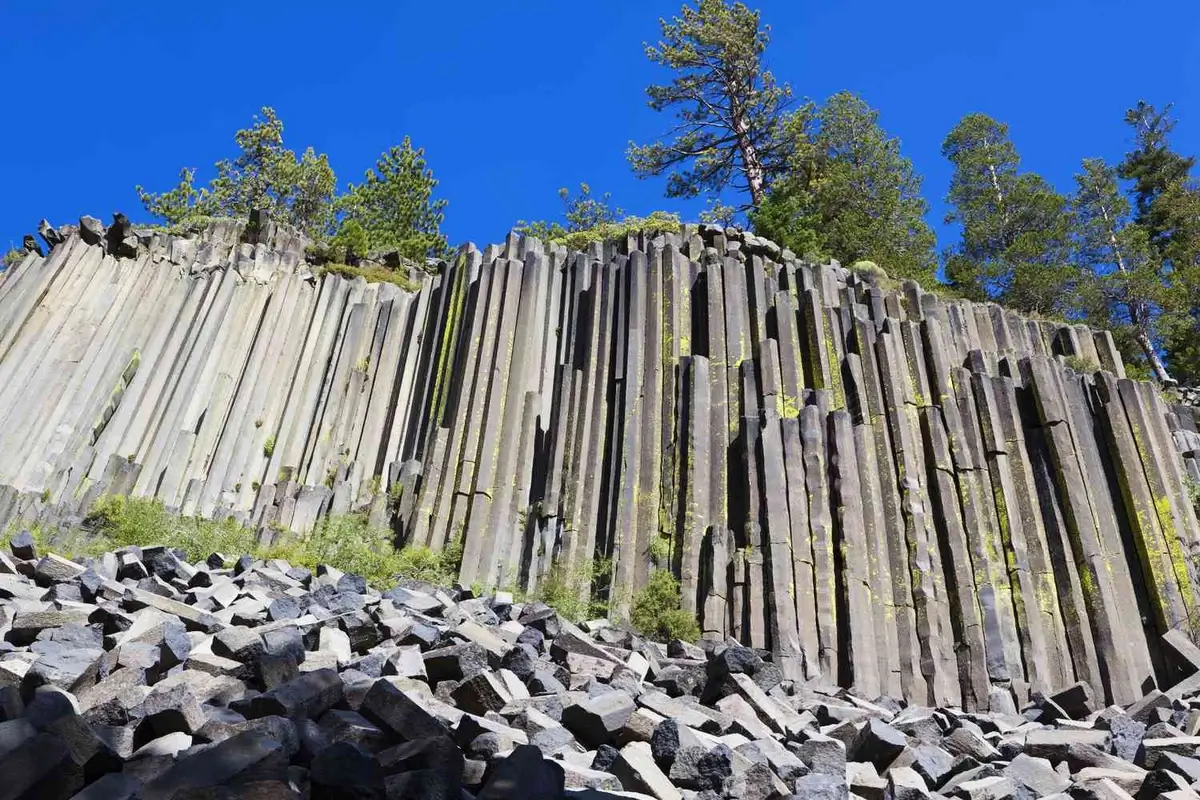
Image: Treehugger
8. Pumice: The Igneous Rock That Floats on Water
Pumice, unique among igneous rocks for its ability to float on water, is formed from the frothy cooling of high-gas magma. This process creates a highly porous and lightweight structure, often used for abrasive materials.
The eruption of Mount Pinatubo in 1991 produced vast quantities of pumice, significantly affecting the surrounding environment. Pumice rafts, floating masses of this rock, can travel thousands of kilometers across oceans, playing a role in the dispersal of marine organisms.
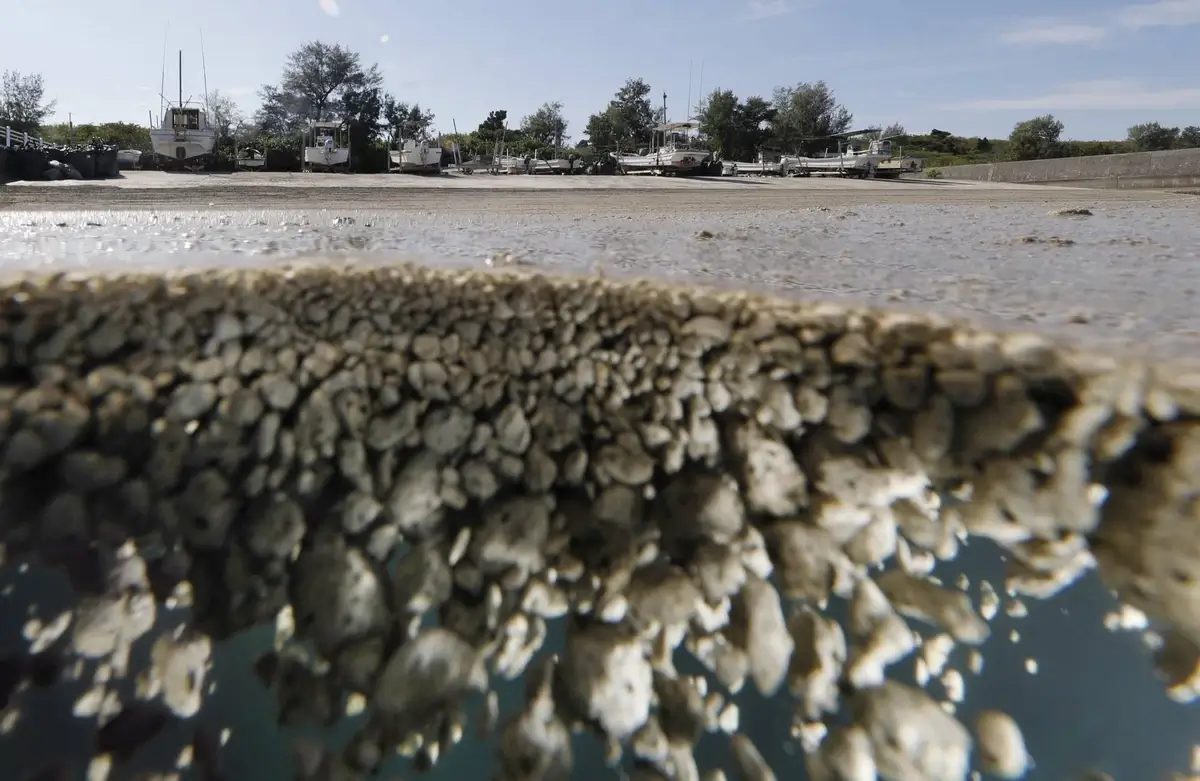
Pumice stones floating on water. Image: japantimes.co.jp
9. Intrusive vs Extrusive: Understanding Igneous Rock Types
The classification of igneous rocks into intrusive and extrusive types hinges on their formation location. Intrusive rocks, like granite and gabbro, cool slowly beneath the Earth’s surface, allowing large crystals to form. In contrast, extrusive rocks, such as basalt and pumice, form from lava that cools rapidly on the Earth’s surface, resulting in a fine-grained or glassy texture.
This distinction is crucial in understanding the geological history of an area. For example, the presence of intrusive rocks can indicate long-term geological processes, while extrusive rocks often signify more recent volcanic activity.
10. The Role of Igneous Rocks in Earth’s Geothermal Activity
Igneous rocks are integral to Earth’s geothermal systems. These rocks, especially those formed deep within the Earth like granite, can hold significant heat. This heat is often harnessed in geothermal energy production. For example, the Geysers Geothermal Field in California, located in an area rich in igneous rocks, is one of the largest geothermal power plants globally.
The presence of igneous rocks in these regions is key to sustaining geothermal activity, as they provide the necessary heat to produce steam for power generation.

Image: wired.com
11. Mineral Wealth: Igneous Rocks as Sources of Precious Gems
Igneous rocks are renowned for harboring some of Earth’s most coveted treasures: precious gems. Kimberlite, a type of igneous rock, is famously known as the primary source of diamonds, formed under extreme pressure and temperatures deep within the Earth’s mantle. These rocks transport diamonds to the surface during volcanic eruptions.
Other igneous rocks, like pegmatites, are rich in rare minerals and host gems like topaz, beryl, and tourmaline. The discovery of these gem-bearing rocks has led to significant economic and geological interest, with notable mines such as the Cullinan Diamond Mine in South Africa, which has been operational since 1902.
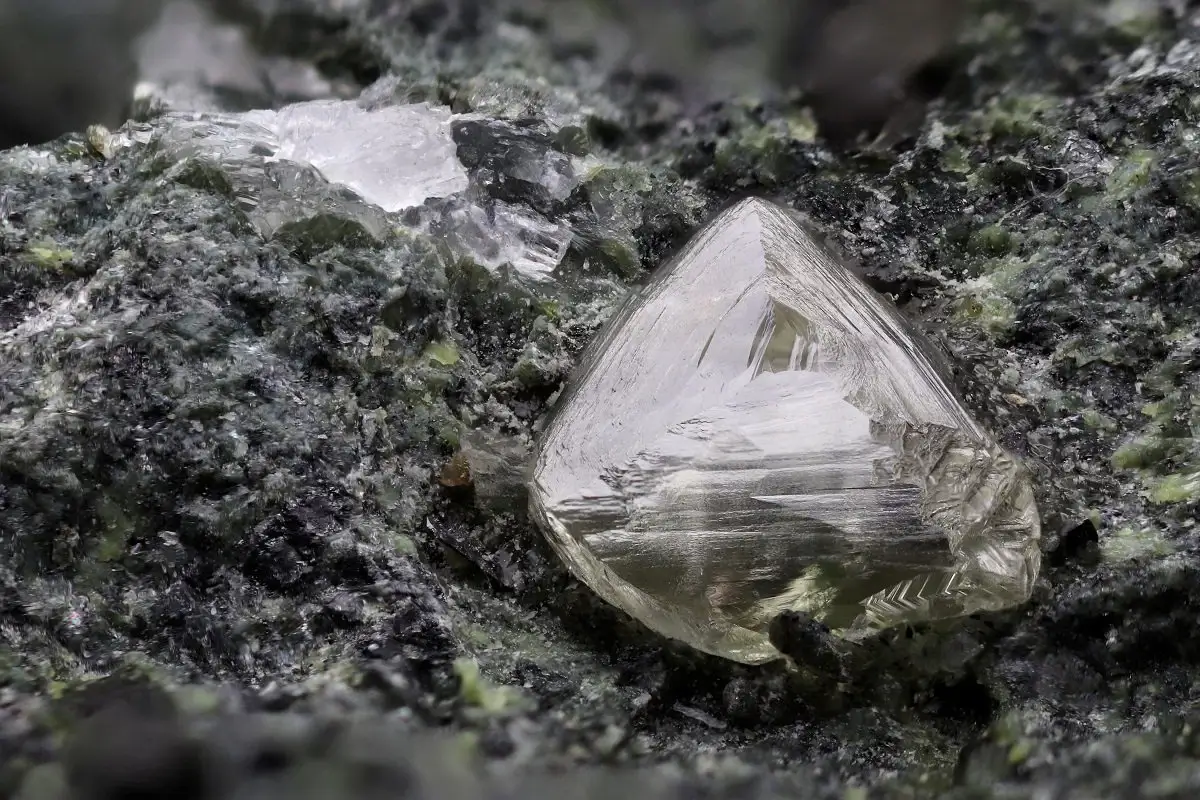
Kimberlite. Image: rockseeker.com
12. The Cooling Patterns: How Crystals in Igneous Rocks Form
The crystal size in igneous rocks is a direct result of their cooling history. Slow cooling, typical of intrusive rocks like granite, allows time for large, well-formed crystals to develop. Conversely, rapid cooling, as seen in extrusive rocks like basalt, results in small, often microscopic crystals.
This variation in crystal size provides vital clues to geologists about the rock’s formation environment. For instance, the large feldspar crystals in some granites indicate a prolonged cooling period, possibly spanning millions of years.
13. Telling Time with Igneous Rocks: Radiometric Dating Methods
Igneous rocks are pivotal in the radiometric dating of geological events. Techniques like uranium-lead dating, particularly used on zircon crystals found in igneous rocks, enable scientists to determine the age of these rocks, often to a precise degree.
This method has revealed ages of rocks from a few thousand years to over 4 billion years old, providing insights into Earth’s early history. The radiometric dating of igneous rocks has been instrumental in understanding the timeline of geological events, including the age of the Earth itself.
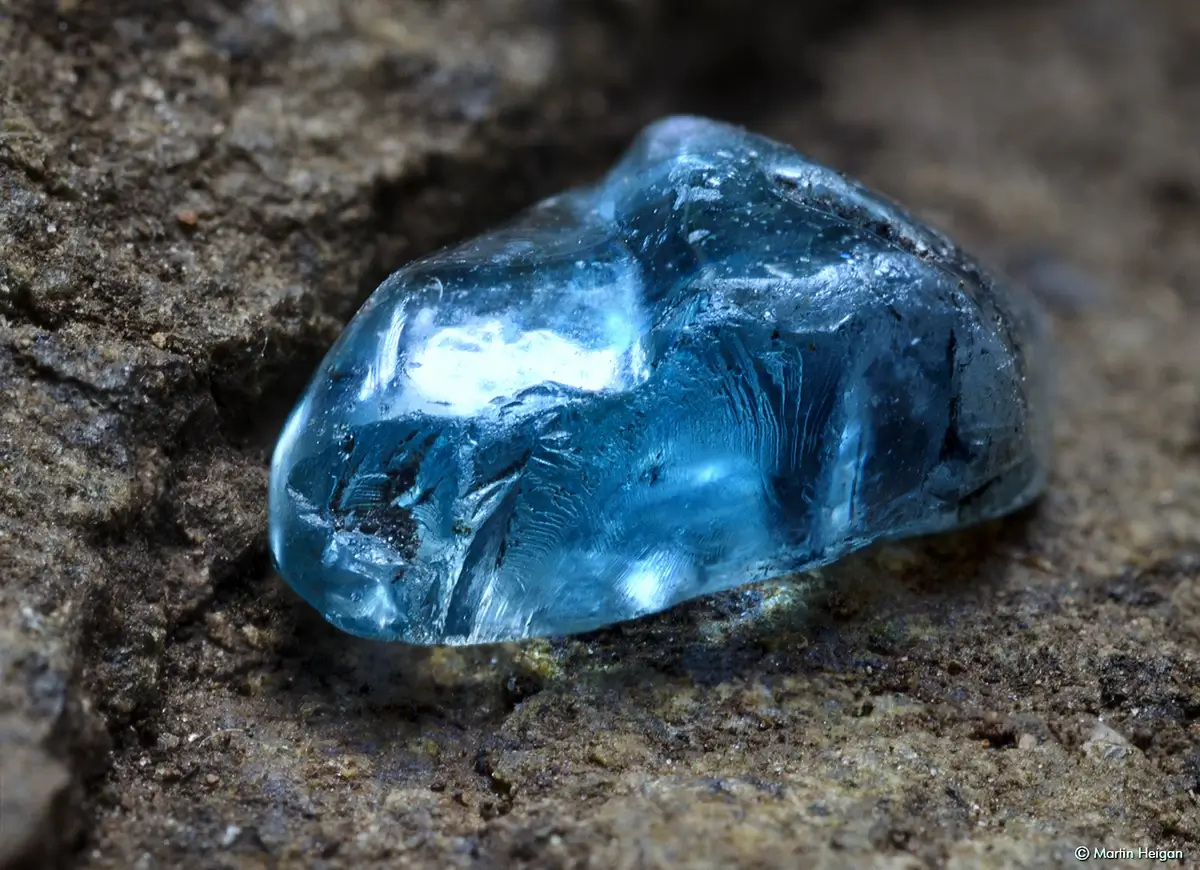
Zircon crystals used in uranium-lead dating. Martin Heigan / Flickr
14. The Impact of Igneous Rocks on Soil Fertility
Igneous rocks significantly influence soil fertility. As these rocks weather, they release essential nutrients like potassium, phosphorus, and trace elements into the soil. Basaltic rock, in particular, is known for its positive impact on soil health due to its mineral composition.
Studies, such as those conducted in Brazil’s coffee-growing regions, have shown that soils derived from basaltic rock are more fertile and conducive to agriculture. This natural fertilization process underscores the importance of igneous rocks in sustaining ecosystems and agriculture.
15. Igneous Rocks in Space Exploration: Unveiling the Solar System
Igneous rocks play a crucial role in space exploration and understanding the solar system. The study of igneous rocks on the moon, Mars, and meteorites provides crucial data about the geological history of these celestial bodies. For instance, the basaltic rocks found on the moon during the Apollo missions offered insights into lunar volcanism.
The ongoing analysis of Martian rocks by rovers like Perseverance helps to unravel Mars’ volcanic history and potential for past life. These extraterrestrial igneous rocks are key to piecing together the solar system’s formation and evolution.
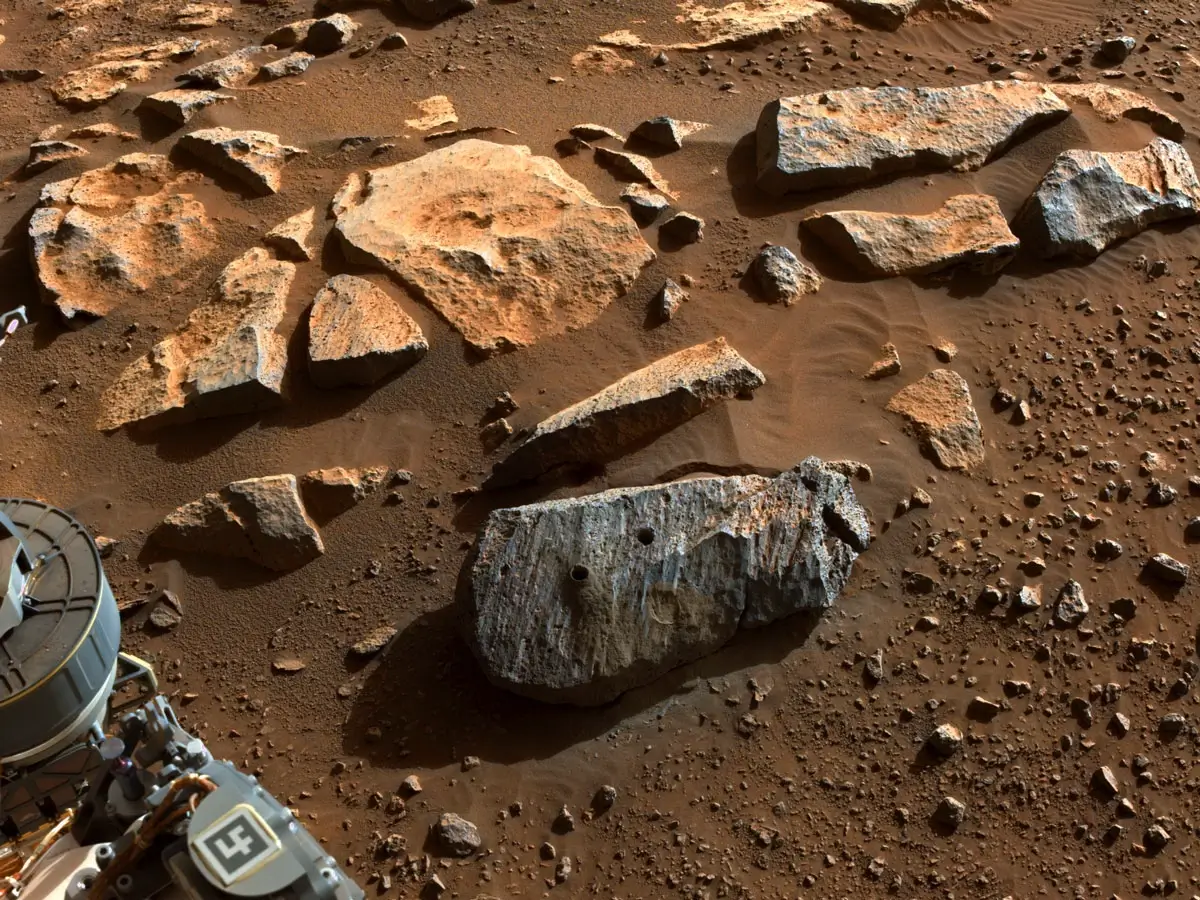
Mars rock samples. Image: mars.nasa.gov
FAQ
What are 3 things igneous rocks used for?
Igneous rocks have several practical uses due to their durability and abundance. First, they are extensively used in construction; granite, for instance, is a popular choice for building facades, monuments, and countertops. Second, certain types of igneous rocks, like pumice, are used in abrasive materials for cleaning and polishing. Third, they are important in the making of tools and decorative items; obsidian, known for its sharp edges, has been used historically for cutting tools and ornamental objects.
What makes igneous rocks unique?
The uniqueness of igneous rocks lies in their formation: they are created from the cooling and solidification of magma or lava. This process results in a wide variety of textures and compositions. Igneous rocks are also categorized as intrusive or extrusive, based on whether they solidify beneath the Earth’s surface or above it. This distinction leads to a diverse range of physical characteristics, making each igneous rock unique in its appearance and structure.
What are the 5 characteristics of igneous rocks?
Five key characteristics of igneous rocks are:
- Crystal Size: Igneous rocks exhibit a range of crystal sizes, which are determined by the rate of cooling. Slow cooling results in larger crystals, while rapid cooling leads to smaller or even microscopic crystals.
- Texture: They can have a variety of textures, from glassy and fine-grained to coarse-grained and porous.
- Color: The color of igneous rocks varies depending on their mineral composition, ranging from dark (basalt) to light (granite).
- Density: These rocks also vary in density; for example, pumice is light enough to float on water, whereas basalt is denser and heavier.
- Chemical Composition: The chemical composition of igneous rocks can range from felsic (rich in silica) to mafic (rich in magnesium and iron), influencing their properties and uses.
What is the rarest type of igneous rock?
Komatiite is considered one of the rarest types of igneous rock. It is a high-magnesium, ultramafic volcanic rock that is believed to have formed under extremely high temperatures. Komatiite flows are mostly found in Archean-age greenstone belts, with notable occurrences in Canada, Australia, and South Africa. Their rarity is attributed to the specific and unusual conditions required for their formation, which are not commonly found in the Earth’s mantle today.
Are igneous rocks hard or soft?
Igneous rocks are generally hard. This hardness is due to the interlocking crystalline structure that forms as the magma or lava cools and solidifies. Rocks like granite and basalt are known for their strength and durability, which is why they are commonly used in construction and other industries requiring robust materials.
Where did igneous rock get its name?
The name ‘igneous’ comes from the Latin word ‘ignis’, meaning fire. This name is fitting as igneous rocks are formed from solidified magma or lava – materials that are inherently associated with high temperatures and volcanic activity. The term reflects the fiery origin of these rocks.
Are igneous rocks valuable?
The value of igneous rocks varies depending on their type and use. While some, like granite and basalt, are valuable for construction and architectural purposes, others hold value in the gemstone market. For example, diamonds, one of the most valuable gemstones, are found in kimberlite, a type of igneous rock. However, not all igneous rocks are considered valuable in a commercial sense; their value often depends on their rarity, aesthetic appeal, and practical applications.


